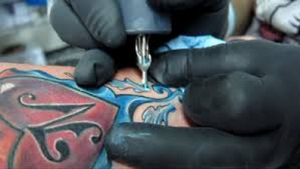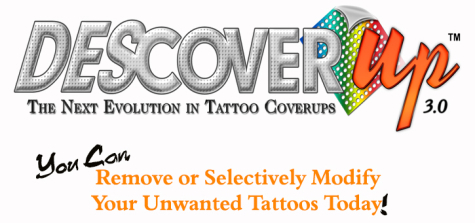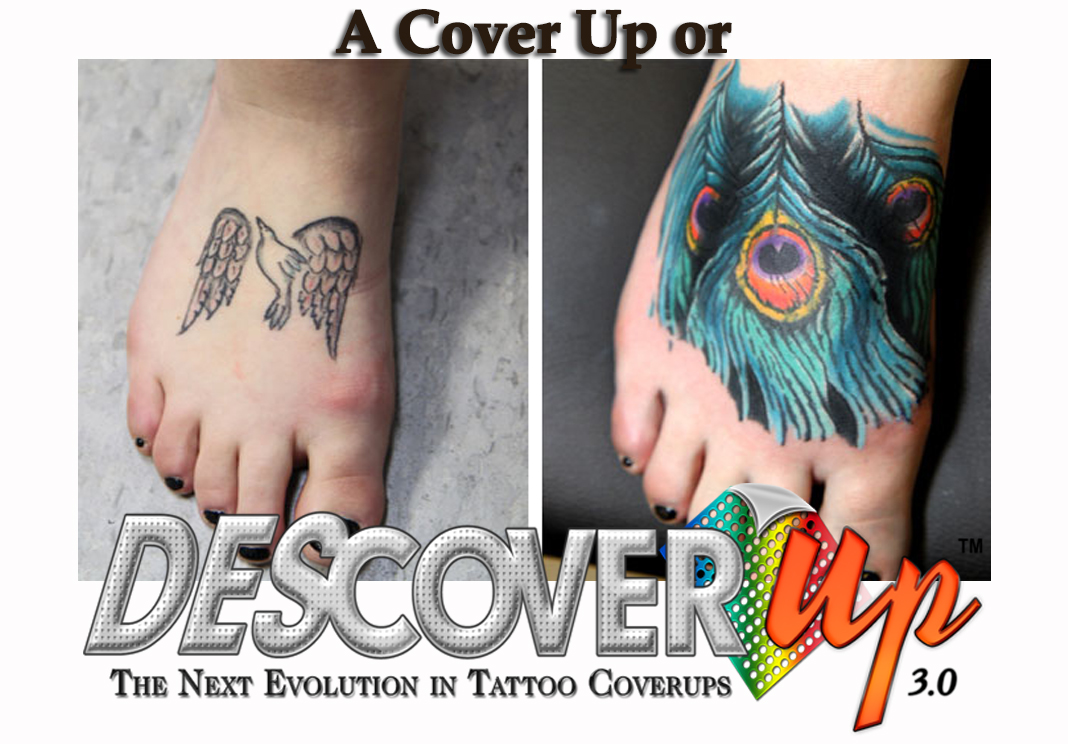Great Minds Think Alike – by Cee Jay Jones
I’m a cover up artist. At least 70% of everything I do is a cover up. I have spent the better part of my 18 years tattooing nearly perfecting the art of the cover up. I realize the concept of perfecting a cover up is truly an impossible task. It can be an exceedingly difficult process trying to eliminate something preexisting in such a manner that no one has any concept something was ever there to begin with. Some artists rise to the challenge and give it all their best efforts, while other artists politely decline or at least temporarily refuse until some sort of laser removal occurs.
Since I’ve had the displeasure of tattooing from one of the worst economically depressed climates in the country (Detroit), laser treatments aren’t an affordable option for many of my clients. In fact, coming up with the money to have bad tattoos covered presents a challenge for numerous people I encounter. With that said, I completely understand getting a tattoo is a luxury item, not something that’s ever necessary in a person’s life. But, when someone has an awful tattoo that’s difficult to hide or a tattoo associated with painful memories, it can be a necessity to a person’s psyche to have it in some manner removed or altered.
This makes the job of a cover up much more daunting and precarious than an average tattoo on a clean canvas. The job of an artist approaching a client in need of a cover up must proceed with caution and empathy. A cover up artist’s task is to carry the failure of a previous artist or bad tattoo choice into a positive direction. This isn’t a process to be taken lightly. There should be an extremely high sense of responsibility when taking on a cover up project with a client. As an artist, if you don’t feel so, then you shouldn’t be doing cover ups.
 The unfortunate truth with a cover up tattoo is that there isn’t a gray area. It’s a pass or fail situation. If someone other than a skilled veteran tattooer looks at a tattoo and says “That’s a great cover up”; you have failed. The point in the cover up is that no one is supposed to know that anything was there in the first place. The tattoo should be able to stand on it’s own as a good solid tattoo, period. I’ve been able to accrue a substantially large clientele because I’m able to take on exceedingly difficult projects without the aid of a laser.
The unfortunate truth with a cover up tattoo is that there isn’t a gray area. It’s a pass or fail situation. If someone other than a skilled veteran tattooer looks at a tattoo and says “That’s a great cover up”; you have failed. The point in the cover up is that no one is supposed to know that anything was there in the first place. The tattoo should be able to stand on it’s own as a good solid tattoo, period. I’ve been able to accrue a substantially large clientele because I’m able to take on exceedingly difficult projects without the aid of a laser.
As I mentioned earlier, people in my area simply cannot afford to explore this option. I’ve explained to many of my clients who’ve been turned down by several other studios in the area those lasers aren’t necessary to completely cover a tattoo. If you really know what you’re doing, this is an absolute truth. However, when I approach a tattoo that needs to be covered, I often have to redirect my process away from how I would normally create a tattoo. I now have to figure out how to properly utilize the existing tattoo into the cover up piece in such a way that it enhances the new tattoo rather than works against it. Depending on size, location, subject matter and how dark the tattoo is; it can be grueling process.
 With a majority of my cover ups, I run into situations where most of the tattoo is rather easy to eliminate, but there’s always just one cumbersome area that forces me to completely rethink my approach in order properly disguise what’s there. Believe me, after eighteen years I’ve got a ton of tricks up my sleeve but if only I could slightly lighten the problem area or at least disrupt the trouble spot enough to not have to rearrange my entire method, it would probably save me hours, weeks or years of my life. I’ve recently discovered a way to do this without lasers. It’s an amazing new product.
With a majority of my cover ups, I run into situations where most of the tattoo is rather easy to eliminate, but there’s always just one cumbersome area that forces me to completely rethink my approach in order properly disguise what’s there. Believe me, after eighteen years I’ve got a ton of tricks up my sleeve but if only I could slightly lighten the problem area or at least disrupt the trouble spot enough to not have to rearrange my entire method, it would probably save me hours, weeks or years of my life. I’ve recently discovered a way to do this without lasers. It’s an amazing new product.
It’s a game changer. It will change everything about how cover ups are approached and I believe eventually change the face of our industry in our near future. But, before I get into that it’s important to truly understand the nature of a cover up tattoo and how it affects the skin. It’s also important to understand what removal options exist and how they can affect the landscape of a probable cover up.
In my next entry I will discuss these subjects and the possibilities that exist within them. Please check out part two of “Maximizing your cover up potential” if you’re serious about making the most out of the cover up options you offer your clients.
Find Out How Your Studio Can Maximize their Cover Up Potential by Clicking Here

